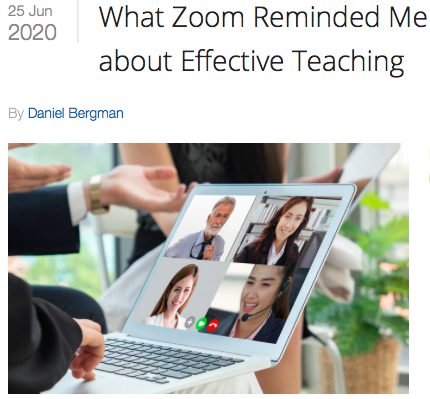People throw around the word “unprecedented” way too often, but it’s safe to say our society is truly experiencing an unprecedented time in history.
With the current coronavirus pandemic (a.k.a. COVID-19), everyone in education is working to figure out how to operate in this “new normal.”
A big change for many teachers has been teaching class sessions and interacting with students via Zoom or similar videoconference tools.
In a way, many teachers have become “Professor Zoom.” But in a good way.
(For those a little rusty on the Flash’s rogues gallery, Professor Zoom is an arch-villain who also has super-speed. And he loves the color yellow.)

Recently, I wrote a brief article for the “Ed Prep Matters” blog of the American Association of Colleges for Teacher Education (AACTE). In it, I share how using Zoom has helped me sharpen my overall teaching, focusing on three particular areas.
These critical components apply to both online and face-to-face teaching:
- Classroom Norms
- Student Questions and Comments
- Instructional Behaviors
Here’s a link to this article with more discussion and examples: https://edprepmatters.net/2020/06/what-zoom-reminded-me-about-effective-teaching/

And as an added bonus, here is a FOURTH area where Zoom can help teachers reflect and improve their practice:
4. Group Work
An old joke among educators is group work is what the teacher plans for when they haven’t planned an actual lesson. In truth, effective group work requires purposeful preparation by the teacher—worthwhile tasks, intentional grouping, necessary materials, detailed procedures, and more.
Teaching through Zoom has increased my awareness of collaborative tasks, both in aim and execution, providing the option of using “breakout rooms” during a videoconference.
Teachers can assign groups randomly or manually in Zoom, either ahead of time or during the live session, or both. As host instructor, I can drop into any group I like to listen or assist, although I prefer acting as silent observer to encourage student leadership.
These same habits are ideal in face-to-face classrooms, as carefully planned student collaborations can create a culture of shared responsibility and productive rapport – sort of like the best superhero teams!

